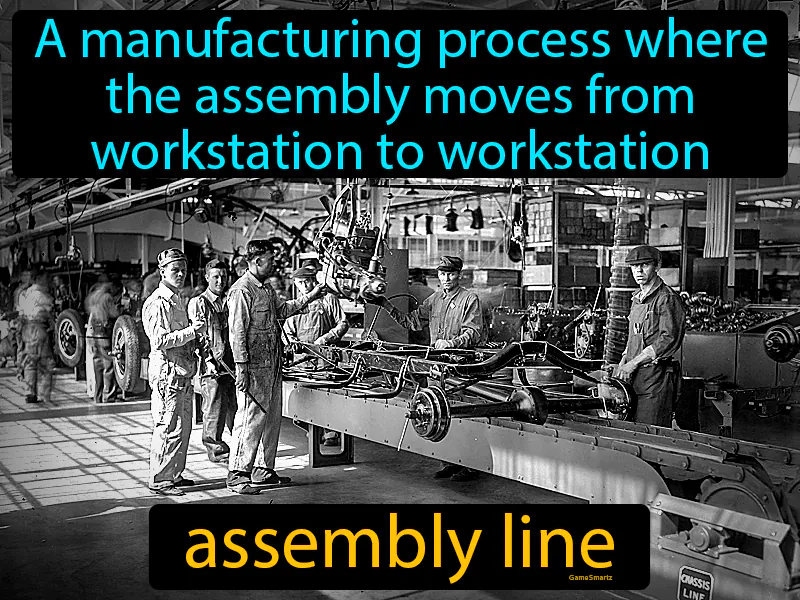Assembly Line
Assembly Line: Easy to understand
In the 1920s, the assembly line revolutionized manufacturing by allowing products to be made faster and cheaper, contributing significantly to the booming economy of the decade. Henry Ford popularized this method in automobile production, which made cars more affordable for the average person. The assembly line responded to the need for mass production and efficiency, helping industries meet the growing demand for consumer goods. Today, the concept is still important as it is used in factories worldwide, affecting the availability and cost of everything from electronics to clothes. For example, the smartphone you use daily was likely produced on an assembly line, making it more affordable and accessible for you and millions of others.

Practice Version

Assembly Line: A manufacturing process where the assembly moves from workstation to workstation. Assembly line. Invented by Henry Ford, the assembly line revolutionized production by making it faster and more efficient.